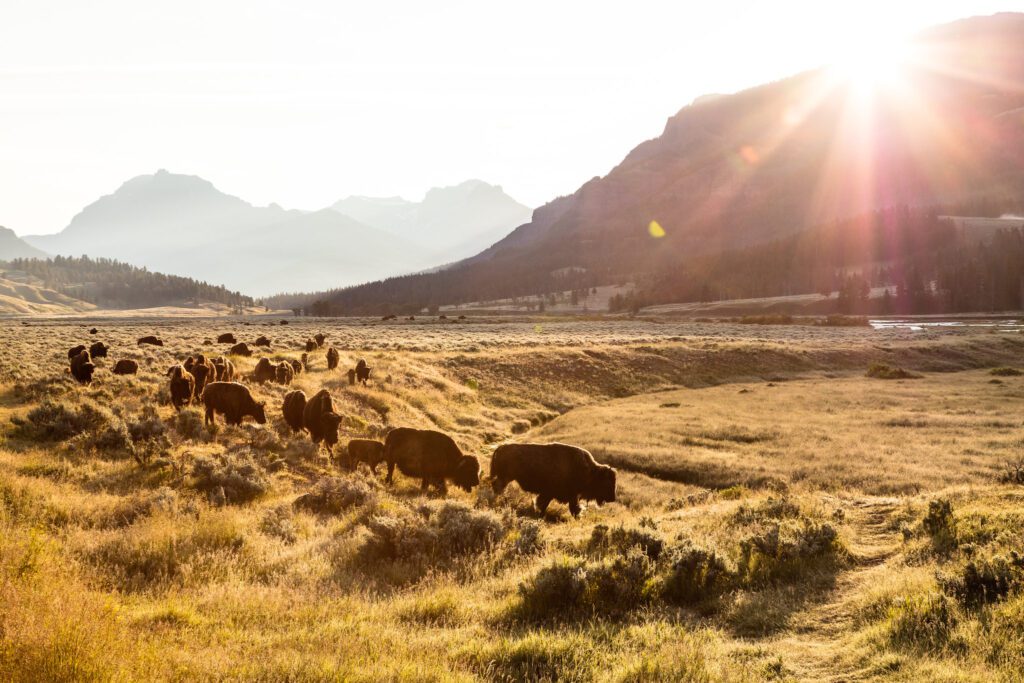Where To Find Yellowstone Wildlife
If you’re planning a trip to America’s first National Park you are undoubtedly being drawn, at least in part, by the stunning wildlife in Yellowstone. A greater concentration of large mammals can be found here in Yellowstone than anywhere else in the U.S outside of Alaska. Having lived in and around the park since 2018, ‘where can we see bears,’ or ‘where can we find moose,’ ‘where is X animal,’ is easily the most frequent sort of question posed to me by visitors. In this article I’m going to share my answers and my tips for finding wildlife in the park, the best places to look, and my tips for a great day spent watching wildlife in Yellowstone.
Elk
First, it helps to have an idea of what kinds of wildlife are living in and around Yellowstone. Easily the most common large animal encountered in the park is Elk. Female elk, called cows, can weigh over 600 lbs, are fiercely protective of their young, and do not have antlers. Males on the other hand can weigh over half a ton and sport antlers grown anew each year beginning in the spring. Elk migrate to lower elevations in the winter, often leaving the park, meaning the actual number of elk in Yellowstone fluctuates throughout the year. The National Park Services (NPS) estimates that Yellowstone provides summer ranges for between 10,000 and 20,000 elk.
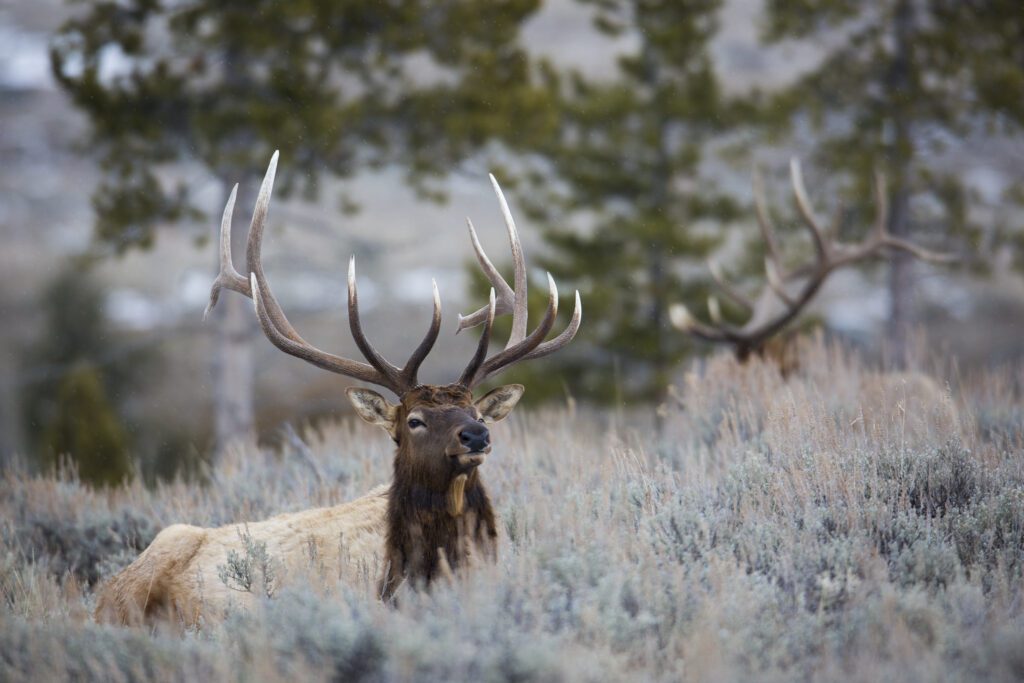
Bison
Bison are another fairly common, but still highly sought after large mammal within the park. Both male and female bison grow horns which they do not shed and retain their entire lives, sometimes growing up to two feet in length. Female bison, again known as cows, can weigh up to half a ton, while males, called bulls, can weigh up to a full ton. Yellowstone is the only place in the U.S where bison have lived continuously since prehistoric times and exhibit similar patterns of behavior and migration as their ancestors did thousands of years ago. NPS estimates there are around 5,450 bison within the park. Like elk, bison migrate between winter and summer, following the growth of plantlife as spring begins.
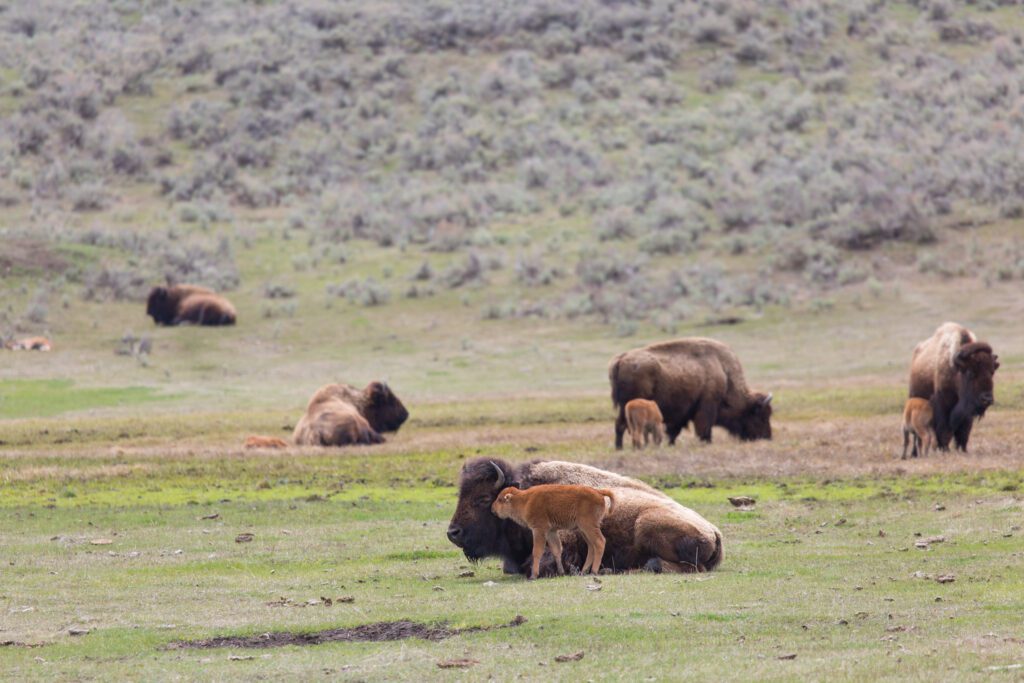
Wolves
Wolves aren’t as easy to find as bison or elk, but are immensely rewarding to see in nature. Wolves were driven to extinction within Yellowstone due to hunting outside of the park and a misguided extermination program led by NPS. In the early days of Yellowstone, park managers believed that large predators like wolves and bears were a detriment to the park’s utility and were generally undesirable. By 1926 sustainable wolf populations had been eliminated within Yellowstone when the last two recorded wolves, pups found near Soda Butte Creek, were killed by park rangers.
Since the eradication of wolves much has been learned about the delicate balances and influences of the many species of plants and animals within Yellowstone’s ecosystem. Without predation by wolves elk populations within Yellowstone exploded leading to overgrazing and ecosystem degradation within the park. This had a cascading effect on multiple ecosystems within the park leading to declines in numbers of aspen trees, beavers, and rapidly expanding then collapsing numbers of elk.
In 1995 wolves were reintroduced to Yellowstone from populations in Northern Montana and Canada and have largely recovered within the park’s boundaries, though they still face human-related threats outside the park’s borders. Significantly, in the early months of 2022, one-fifth of all Yellowstone wolves, amounting to 25, were killed by hunters just outside of Yellowstone park. The struggle to protect Yellowstone’s wolf population continues. NPS estimated the wolf population in the park to be 95 in 2021.
Wolves are easiest to see in the winter months when they adopt a more aggressive hunting strategy. Scopes and binoculars are a necessity when searching for wolves as they prefer to keep their distance with humans. Early in the morning and late in the evening are the best times to spot wolves, and Hayden and Lamar valley are the best locations to search.

Bears
Yellowstone has two types of bears: grizzly bears and black bears. Grizzly bears are the larger of the two with males weighing up to 700lbs and females up to 400. Black bear males on the other hand weigh up to 315lbs and females up to 200lbs. Differentiating the two species is not as simple as their names may suggest. While grizzly bears vary in color from brown to black, black bears range in color from black, to brown, to cinnamon. Color is not a reliable means of differentiating the two species. Instead consider the following. Grizzly bears have a large hump of muscle above their shoulders which black bears lack, as well as a more concave face, smaller ears, and larger claws than black bears.
Both grizzly and black bears are omnivorous, seeking food in the form of scavenged carcasses, insects, fish, live prey, and a variety of berries, roots, and other plants. Bears can be found in both open and forested areas throughout the park. Bears are a major safety consideration for anyone visiting bear country. It is highly recommended to bring bear spray when walking, hiking, or camping in bear country. It is also required to properly store any food, trash, or other bear attractants when in Yellowstone.
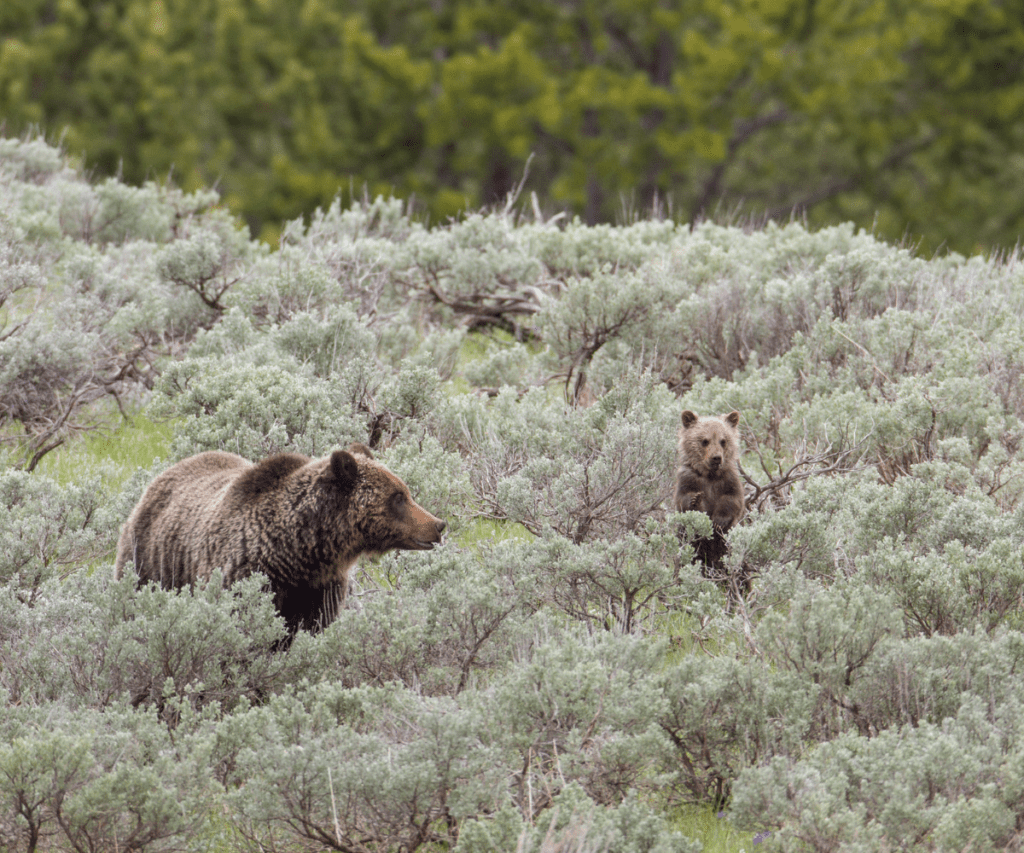
Other Wildlife in Yellowstone
Wolverines, mountain lions, and lynx are among the most elusive animals within the park, rarely being sighted due to their smaller populations and avoidance of human interactions. Sightings of these animals are extremely rare and truly extraordinary experiences.
Yellowstone is also home to over 300 species of birds, 19 of which are raptors, including bald eagles, golden eagles, ospreys, and peregrine falcons. The park is also home to trumpeter swans, pelicans, loons, and a variety of owls and songbirds.
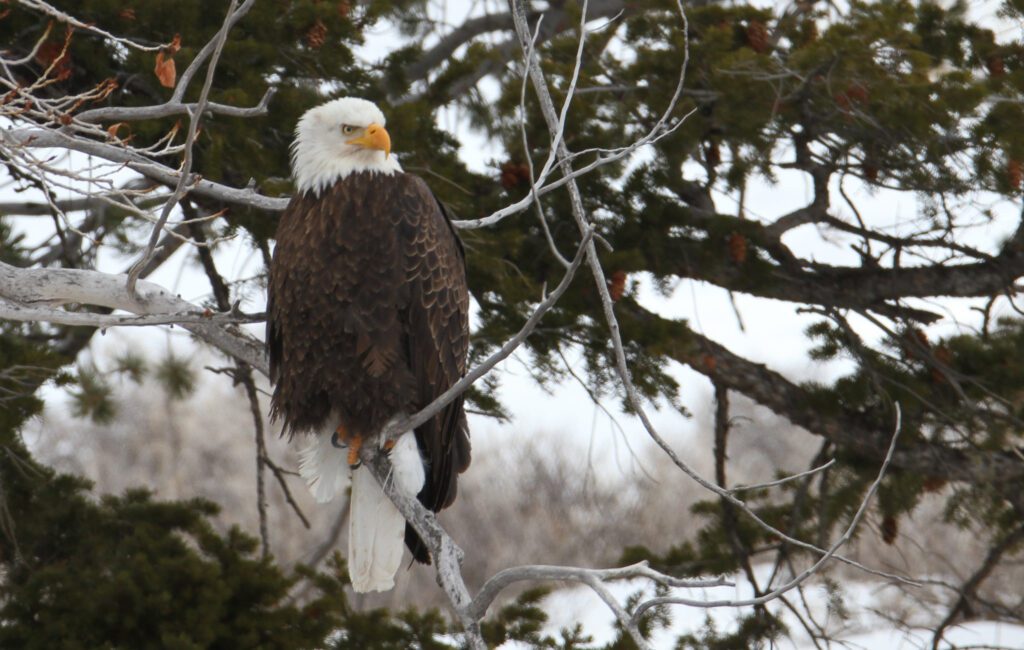
Where to find Wildlife in Yellowstone
Lamar Valley
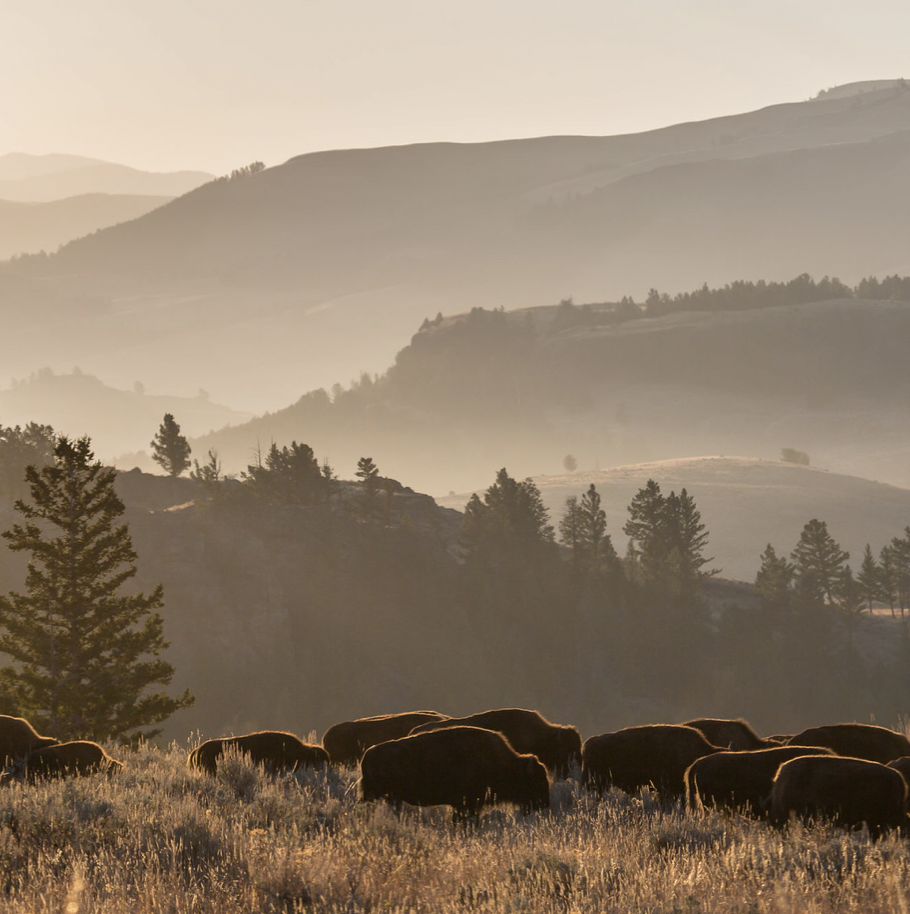
Lamar Valley, part of the Northern Range of Yellowstone, is often called the Serengeti of North America due to its sheer concentration of large mammals. Lamar Valley is also one of the few locations in the park accessible to standard vehicles year round, making it an excellent location for winter wildlife watching. Here you can find massive herds of bison, wolves on the hunt, black and grizzly bears, as well as moose. The landscape here is vast, so be sure to bring binoculars or a scope to spot animals far off in the distance.
Hayden Valley
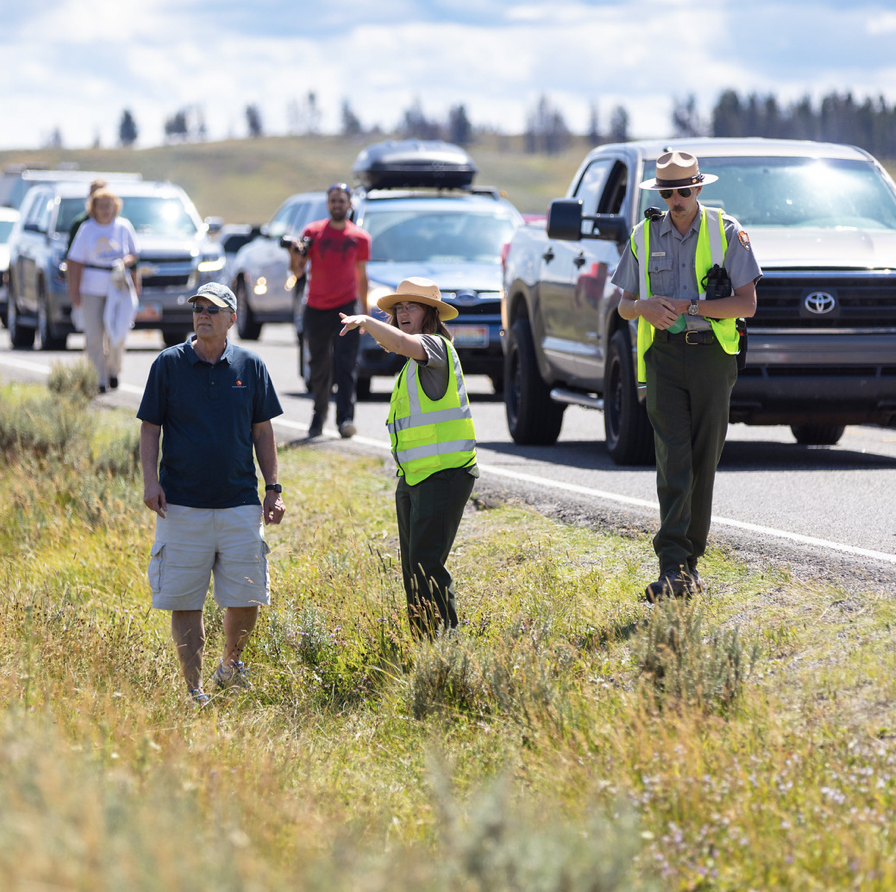
Hayden Valley is another prime location for wildlife watching in the park. This is a major hotspot of bison activity in the summer months and a fantastic place to see wolves year-round. The Yellowstone river, flowing through this valley, also attracts bears and a variety of birds of prey, including eagles and osprey. River otters can also sometimes be seen here.
Mammoth Hot Springs
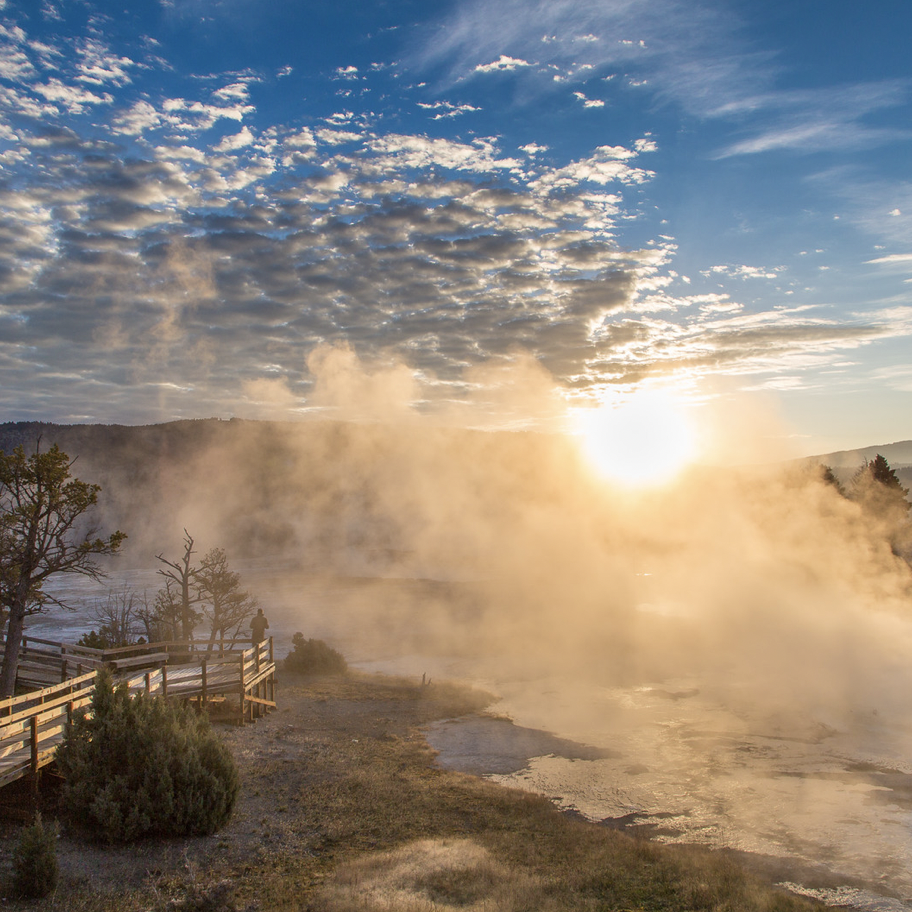
Mammoth Hot Springs is the go-to place to see elk in Yellowstone. They are attracted here by the plentiful non-native grass of the parade grounds, as well as the security from predators provided by human habitation in the area. These elk, however, are not tame and are wild and unpredictable. Never approach elk and keep a distance of at least 25 meters at all times.
Beartooth Pass
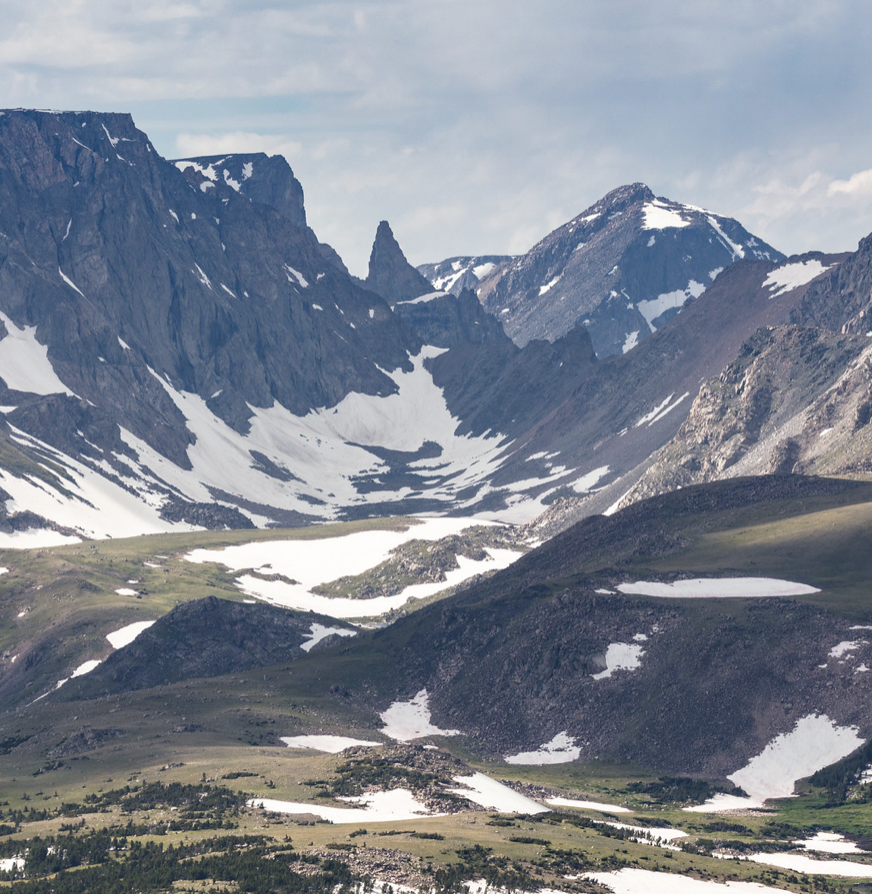
Beartooth Pass, just outside the Northeast entrance to the park, is the best place to view subalpine and alpine environments. The pass reaches an altitude of 10,947ft and is a great place to see bighorn sheep, mountain goats, and provides stunning panoramic views of the park, absaroka, and beartooth ranges. This road is usually only open from mid-May to mid-October but varies with snowfall.

